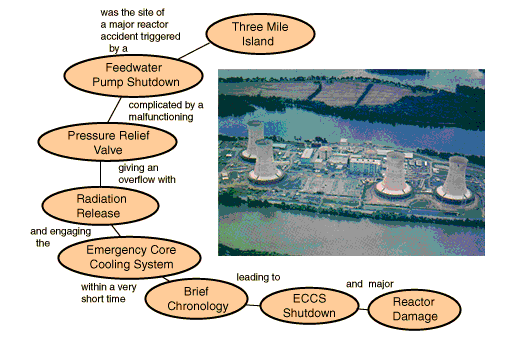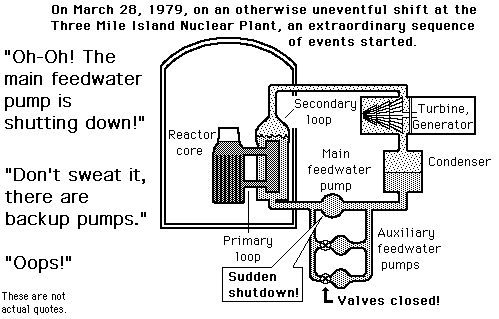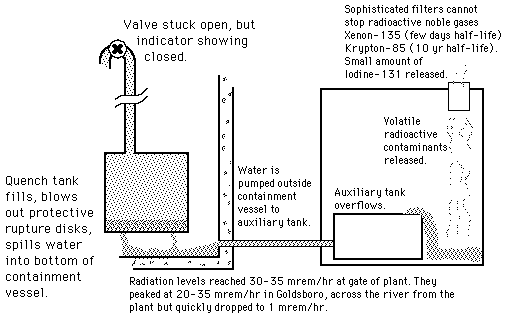
| HyperPhysics***** Nuclear | R Nave |
 |
Index | ||
|
Go Back |
  |
Index Three Mile Island concepts Nuclear energy concepts Fission concepts | ||
|
Go Back |
 |
Index Three Mile Island concepts Nuclear energy concepts Fission concepts | ||
|
Go Back |
The stuck relief valve leads to some radiation release  |
Index Three Mile Island concepts Nuclear energy concepts Fission concepts | ||
|
Go Back |
Meanwhile, back at the reactor ...
 |
Index Three Mile Island concepts Nuclear energy concepts Fission concepts | ||
|
Go Back |
Three Mile Island: A Brief Chronology
 |
Index Three Mile Island concepts Nuclear energy concepts Fission concepts | ||||||||||||||||||||
|
Go Back |
The ECCS was shut off!!
 |
Index Three Mile Island concepts Nuclear energy concepts Fission concepts | ||
|
Go Back |
Three Mile Island Reactor DamageThe financial cost of the Three Mile Island nuclear accident was on the order of a billion dollars. The entire fuel assembly in the reactor was damaged by the heat and the reaction of the hot steam with the zircalloy tubing which contained the fuel pellets.  |
Index Three Mile Island concepts Nuclear energy concepts Fission concepts | ||
|
Go Back |